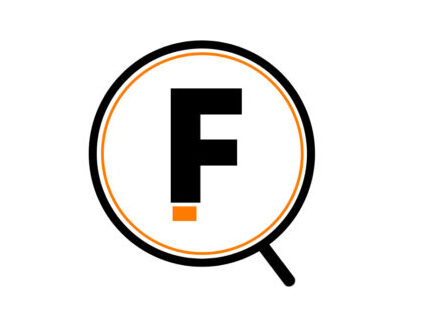What Is SEO?
First of all, SEO stands for Search Engine Optimization. It is a simple way to improve your content in order to gain better visibility and ranking in search engines such as Google and Bing.
In order to conduct SEO on your website content, you may consider a few key factors involved in SEO. This may include Keyword research, Creating high-quality content, Adding meta-description which is basically a short paragraph of what your article is about, Creating good backlinks, and a lot more.
In optimizing your content, you may choose to do it manually or employ some SEO tools that will hasten the process.

5 Simple Ways To Boost Your Website’s SEO
1. Keyword Research
Firstly, before you start writing an article, you have to consider doing proper keyword research instead of randomly jumping from one keyword or article topic to another. The web is a vast place where several bloggers are in great competition, striving for their content to rank on Google over other similar content. In this case, to get a chance to rank, just as you are considering SEO, you also have to consider the technique of keyword research that is going to help boost your post and help it to rank on Google.
What Is Keyword Research?
Keyword research is a very important part of SEO. It means the process by which a blogger takes it upon himself to identify words and phrases that regular users enter into search engines like Google when looking for a particular service, product, or information.
If you are a blogger, before writing a single article you should ask yourself this question: “if I’m looking for this information what will I type into the search box in the search engine, what will be my keyword?”
If I am searching for information on how to use Yoast SEO as a plugin on WordPress, I would likely type in “how to use Yoast SEO plugin on my WordPress site.” That is a clear example of a keyword and as you can see, it is more likely for any other person to type in that exact or closely similar keyword when searching for that exact information I searched for, instead of something as random and unlikely as “I built a WordPress website and I do not know how to use Toast SEO plugin.”
As you can see, these are both keywords but the first is more structured and more likely to be used when searching for that particular information which they are both meant to fetch.
To commence with keyword research, you have to follow the below guidelines
- Put your audience first: Define your target audience and the kind of people you want your post to appear before. Consider what they would like to see and know from a particular post, consider their languages and also their location. This will help you tailor your blog to their taste. Doing all the above you can now know the terms they usually use in searching for information you have to offer.
- Research long-tailed keywords: Long-tailed keywords are longer phrases that people use or enter into search engines to find a particular information. Note that long-tailed keywords usually have low search volumes but they have high conversion rates. This can capture more specific user queries.
- Analyze your competitors: Find and analyze the keywords that bigger websites and blogs in your niche are writing and ranking for. Try to compare your keyword strategies with theirs. Monitor the keywords they are targeting.
- Make use of research tools: For you to gain maximum power in your keyword research techniques, you should consider using a keyword research tool. There are a lot of keyword research tools out there today and many of them provide extremely great features which can help you determine the keyword difficulty (KD), intent, CPC, and search volume. As a beginner in blogging, you should target keywords with low KD and higher search volume. This will help you and increase the possibility of ranking as a beginner in the vast world of blogging.
The Top 5 Keyword Research Tools You Can Use To Step Up Your Game:
- Google keyword planner.
- SEMrush.
- Ahrefs.
- Moz keyword explorer.
- Ubersuggest.
2. On-Page SEO Strategies
Do you know what on-page SEO is? If you do, great! If you don’t I’m going to make it simple in a way you would understand. On-page SEO hits on the work you put in, trying to optimize individual posts/pages on your website or blog to improve their ranking on search engines and in turn gain more exposure and organic traffic.
Simple Ways To Conduct On-Page SEO On Your Website:
- Placement of keywords: This can be done by placing your target keyphrase in locations that can help boost your SEO such as in the headings, in the meta description, in the title, and throughout the content. Remember that as you do this you should not compromise your page’s quality by distributing the keyphrase where not needed and could make it meaningless.
- Meta description: Your meta description should be brief and concise. It should precisely talk about what your page/post is all about. Each post/page should have its own meta description to allow your readers or viewers to know the content of your page from reading the brief information about it.
- Use header tags: Use as many headers as you can in your post necessary to structure your content. Note that this will definitely increase the readability of your post and help readers engage more.
- Image optimization: Make sure to always use alt text with a descriptive keyword. To save time you can use your own page title or post title as the alt text of the image of that post. And make sure to compress images to reduce the file size so that when viewers go through your page/post the images will load much faster.
- Inbound and outbound links: Inbound links are links that connect the page/post to other pages/posts within your website or blog. These links should be necessary to the page/post content and should link to other pages within your site. Outbound links are links that link your website page/post to similar web pages or posts outside your website. This means that if you are writing on 5 freelancing platforms you can as well link that particular post to a similar topic on a different website.
Below Are Some SEO Tools That Can Save Your Blog:
It is advised that you only pick one out of these 3 SEO tools to install on your website combining them on one website is not advisable. Check out the one that works for you and install the plugin on your website.
- Yoast SEO
- Rankmath
- All-in-one SEO
These three are very similar in function it is just that what works for you may not work for me. For my blogs, I use Yoast SEO plugins and it has been great so far.
3. Technical SEO Strategies
Technical SEO includes processes such as making sure your website or blog is mobile responsive, optimizing images for search engines like Google, and improving the overall speed of your website so as to ensure your viewers have good user experiences while engaging with your website. This can help them come back to the website for more information in the future.
4. Ensuring Content Quality
Make sure all you write on your blog is not just some copy-and-paste work, make sure it is highly original with no plagiarized content. If your content is compromised it may not rank well. Make sure not to post violent content that may teach people how to commit crime or fraud, etc. And follow the Google guideline for content. Above all, your content must be relevant and not just a dump of words, it should be written with your readers in mind and you must make sure that you don’t feed them with meaningless or pointless information.
5. Off-Page SEO
This is quite important. It involves promoting yourself and your pages on social media, asking people to blog on your website (guest posting), and most of all building backlinks from reputable websites.
With this article, you should know what SEO is about and the strategies that you can employ to make your website a success. To know more about blogging and blogging related topics, make sure to click our menu and hit on the blog category and learn about WordPress and blogging.


